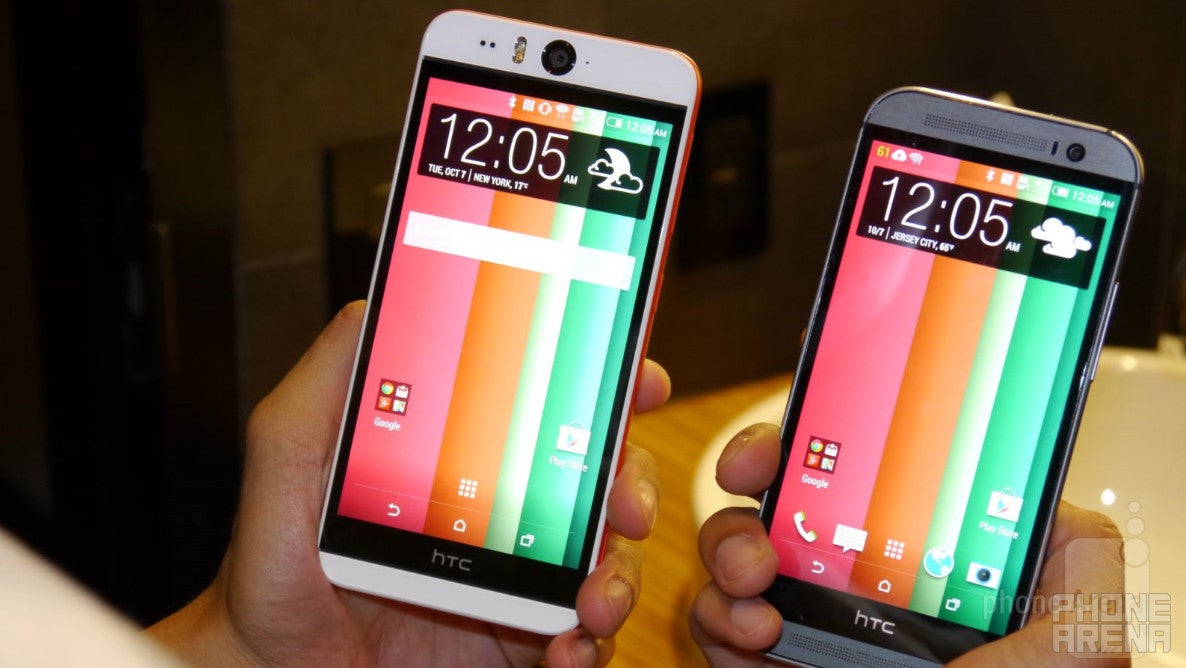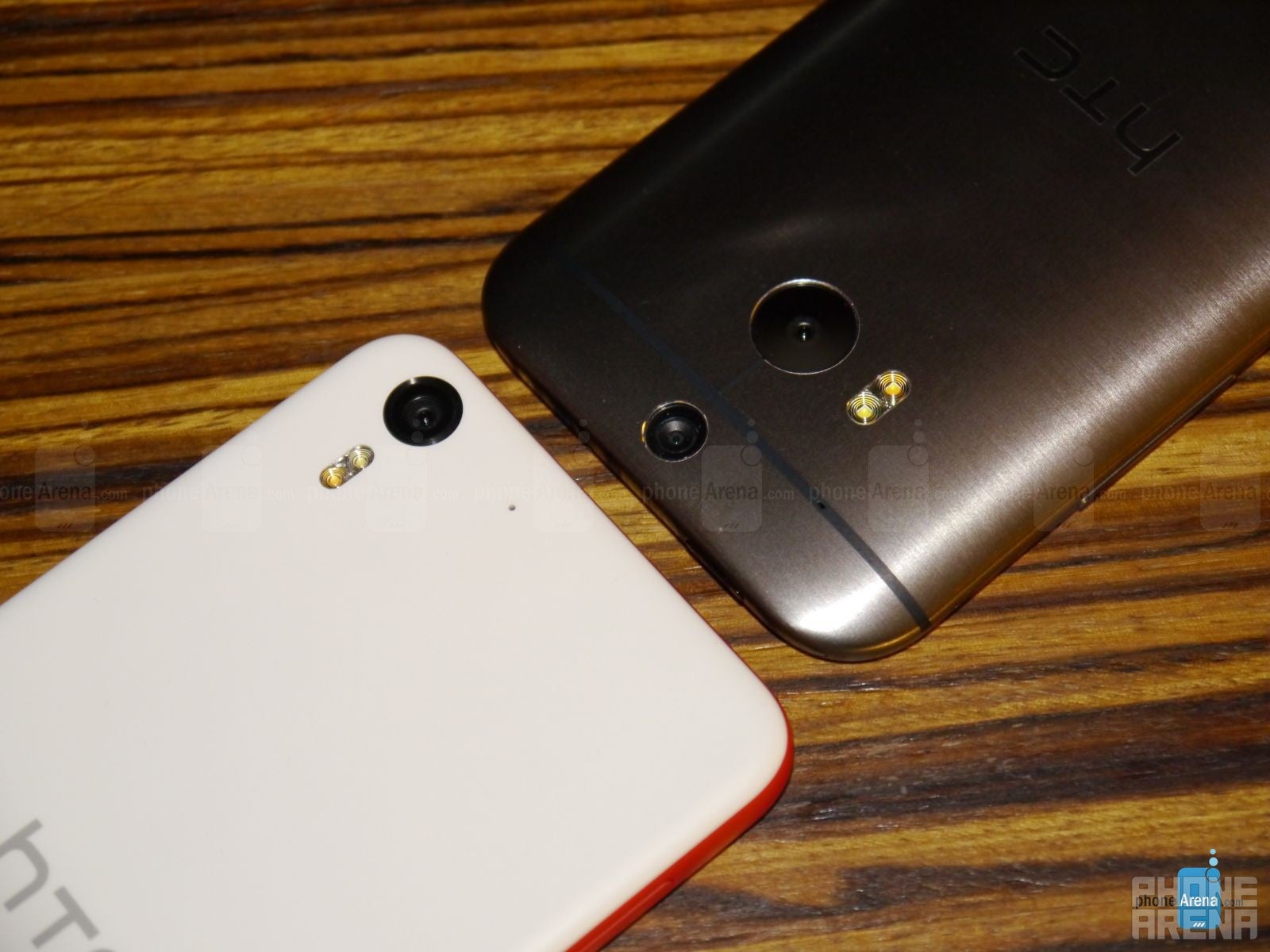HTC Desire EYE versus HTC One (M8): first look

At the top of the ladder in HTC’s portfolio is the One M8, a high-end device that features what’s arguably the best design in a smartphone this year. For all of its high quality goodness, there were a few things it lacked that could’ve elevated its stature in the space. Having the time to always improve, the HTC Desire EYE is aiming to be a more refined product, as it offers beefy sized 13-megapixel front & rear cameras, water resistance construction, and a charming design that fulfills the reputation of the company.
Design
Quite frankly, the HTC One M8’s design is more cutting-edge and modern, thanks in part to its solid brushed aluminum chassis. In comparison, the HTC Desire EYE is more stylish in the way that its plastic body gives off a lively feel – one that’s refreshing for a plastic made thing. Sticking with the plastic construction, however, gives the Desire EYE the advantage of having a water resistance property, which is something that can become useful in certain situations. Aesthetically, we still prefer the eye-catching design of the M8 a whole lot more, but that’s not to take away from what HTC has done with the Desire EYE.
Display
There isn’t one display we’re particularly attracted to over the other, despite the slight pixel density advantage of the M8’s 5-inch 1080 x 1920 Super LCD-3 display. Details are still pretty sharp with the Desire Eye’s 5.2-inch 1080 x 1920 LCD panel as well. Other similar qualities are evident between them as well, like their brightness outputs, viewing angles, and color reproductions. At the end of the day, the two displays present here are equally likable.
Interface
Being products from HTC, they both share the same Sense 6.0 UI running on top of Android 4.4 KitKat – so there are no surprises when looking at what they have to offer. Bearing that in mind, we will point out that the pre-production unit of the HTC Desire EYE we're checking out sees a subtle optimization with its camera app, which we’ll expand more upon later on. That’s because it’s more focused with snapping selfies, but to be fair, we’re told that a future software update will bring the same set of shooting features to the M8.
Processor and Memory
Looking into the hardware under the hoods of the two smartphones, we instantly know that we’re dealing with high-end, contemporary phones here. To be more exact, they’re packing the same quad-core 2.3GHz Qualcomm Snapdragon 801 SoC with 2GB of RAM – the processor that powers many of today’s flagships. Even in our short time checking out the two together, they exhibit pretty much the same responsive performances.
Camera

Expectations
Clearly, each smartphone is targeting a particular audience. The HTC Desire EYE seems like the device that’s fitting to individuals who have an active lifestyle – and those who are impulsive and love to snap selfies. Conversely speaking, being its flagship model, the M8 is meant for people who want the best-of-the-best from the aspect of design, hardware, and performance.










Things that are NOT allowed: